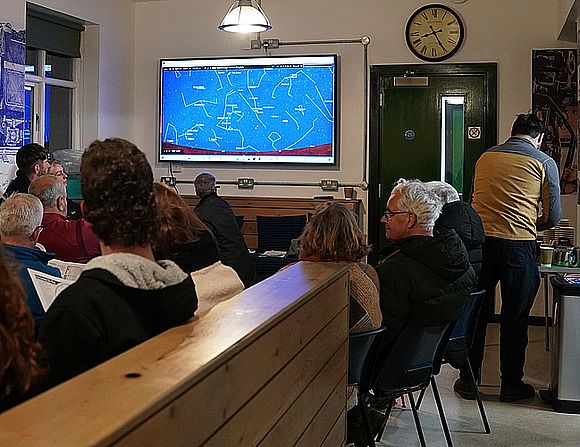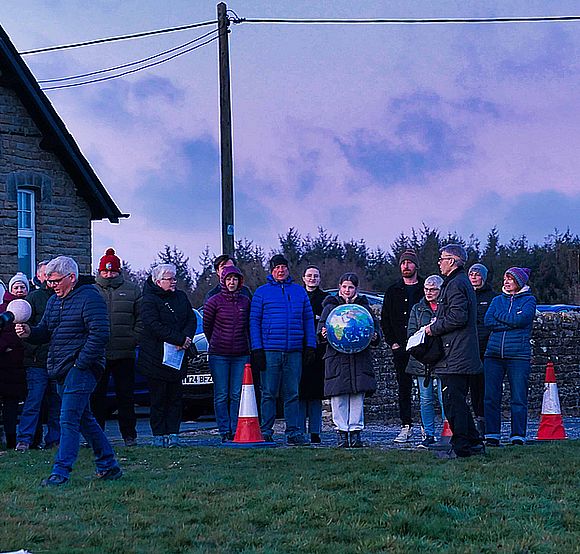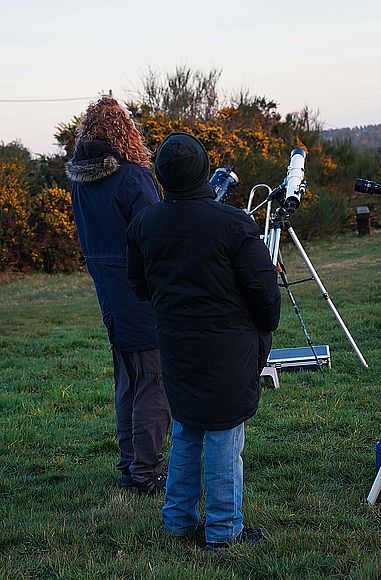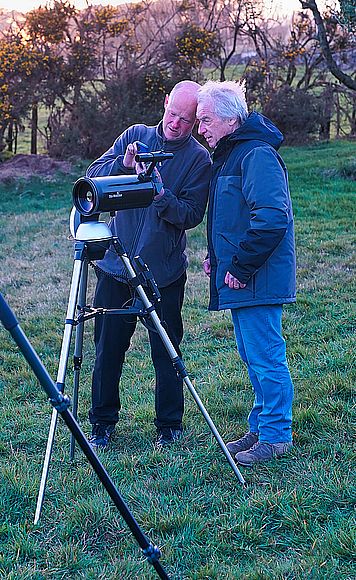Prior to the date of the event (April 4th), high pressure systems had dominated for nearly a week, resulting in predominantly sunny days and clear evenings. However, the forecast suggested a shift in wind direction would bring low cloud inland from over the North Sea and for a period during the afternoon it seemed that observing conditions that evening might be frustratingly poor. Nonetheless, by late afternoon the low cloud fragmented and hopefully would remain offshore until after the event's scheduled conclusion. Emails exchanged between WDAS members and NYMR contact Macey Palmer – the Learning and Interpretation Officer, providing some optimism confirming skies inland were predominantly clear.
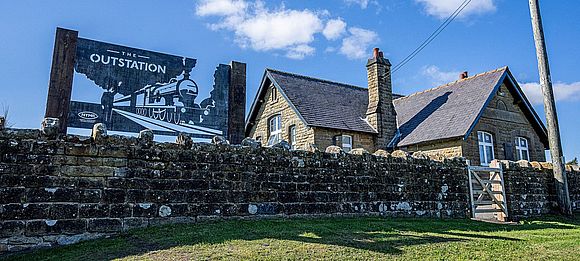 On our previous trip to Stape, we had taken the longer route via Pickering due to road flooding. This time, however, we took a more direct path via Egton Bridge and the Wheeldale Road (approximately 35 minutes from Whitby). Having gathered at Mark's location, our convoy comprised three vehicles: Brian, Lee, and Mark leading the way falling in behind another vehicle which turned out to be driven by fellow WDAS member John McCue. The scenic route over the moors allowed us to appreciate the picturesque landscape, arriving at the Outstation with 25 minutes to spare. This provided ample time to assess the surroundings and set up. Whilst skies were decent, a chilly breeze made the temperature lower than expected.
On our previous trip to Stape, we had taken the longer route via Pickering due to road flooding. This time, however, we took a more direct path via Egton Bridge and the Wheeldale Road (approximately 35 minutes from Whitby). Having gathered at Mark's location, our convoy comprised three vehicles: Brian, Lee, and Mark leading the way falling in behind another vehicle which turned out to be driven by fellow WDAS member John McCue. The scenic route over the moors allowed us to appreciate the picturesque landscape, arriving at the Outstation with 25 minutes to spare. This provided ample time to assess the surroundings and set up. Whilst skies were decent, a chilly breeze made the temperature lower than expected.
After being welcomed by Macey and the NYMR team, parking arrangements were ultimately resolved, and the telescopes were set up in the field adjacent to the Outstation. The instruments included 10-inch and 6-inch Dobsonians, 100mm (4") Tal and Helios refractors, Lee’s 150mm (6") reflector, John L’s ETX, and John McC’s 125mm (5") Cassegrain and SeeStar scope. Attendees continued to arrive, with a total of 30 individuals registered for the event. By 7:30pm, the main activity room was at capacity. Macey introduced the audience and handed over to Mark, who provided a brief overview of the event schedule.
With conditions still too light for observations, the initial activity consisted of an outdoor demonstration of a scaled solar system using string, inflatable globes, mini planets, and audience participation. Once the demonstration reached 'Neptune and beyond,' Keith handled the IT equipment indoors while the solar system was being retracted. The group then reconvened indoors for a presentation on the emerging spring sky, followed by refreshments, handouts, and a Q&A session.
By 8:40pm, twilight was sufficiently deep, and everyone returned to the field for observations. Our initial targets included Jupiter, Mars, and the quarter Moon. Participants were eager to view these celestial bodies, many for the first time, and all found the experience impressive. Brighter stars were identified, although transient clouds, driven by a chilly breeze, occasionally obscured parts of the sky. Laser pointers were used to highlight various constellations. By 9:15pm, most people had returned to the warmth of the activities room, where the evening concluded with a further Q&A session.
Pretty satisfied with how proceedings had unfolded from our perspective, plans were discussed with Macey on future events, who was more than happy with the evening. Shame about the nagging breeze and some cloud, but hey, it was early April and could have been so much worse. Bidding farewell we journeyed home in true darkness, although by then cloud cover really had obscured most of the sky!
Many thanks to Macey and team and WDAS members Brian, John, John, Lee and Keith without whose assistance the event would not be possible.
- Log in to post comments


